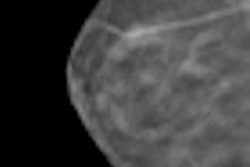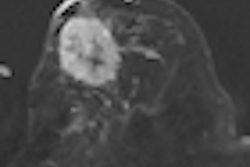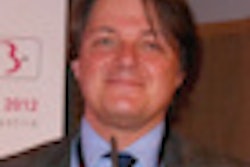VIENNA - In 10 years, breast tomosynthesis will replace full-field digital mammography because of its higher sensitivity, enhanced image quality, and ability to image dense breasts, predicted a presenter at the European Congress of Radiology (ECR) on Thursday.
Right now 15% to 30% of breast cancers are not detected at screening when using mammography. The main reasons are anatomical noise (dense breast tissue); superimposition (when a 3D object is projected onto a 2D image), which gives the appearance of malignancy; and tumor growth patterns that can make cancers difficult to find. Digital breast tomosynthesis (DBT) seems to be a solution because it can image 3D objects better.
"I don't have any stock in Siemens, Hologic, or any of the other [digital breast tomosynthesis manufacturers], but I promise in 10 years breast tomosynthesis will replace mammography," said Dr. Thomas Helbich, a professor of radiology and vice chair of radiology at the Medical University of Vienna.
Helbich and two other presenters, including Dr. Sophia Zackrisson, PhD, who is one of the investigators of the Malmö breast tomosynthesis screening trial, made a case for DBT during a symposium sponsored by Siemens Healthcare.
To determine the feasibility of whether DBT can replace mammography, it's important to test it in a population setting. The Malmö breast tomosynthesis screening trial started in April 2010 with the goal of enrolling 15,000 women, randomly selected from the population-based screening program in Sweden, and offering them DBT in addition to digital mammography. The primary objective of the single-arm, prospective study is to assess sensitivity and specificity of DBT compared to digital mammography.
Preliminary results of the Malmö trial demonstrate that sensitivity is 15% higher with DBT than with full-field digital mammography, according to Zackrisson. On the one hand, DBT detects more cancers, but that also means a slight increase in recall rates (3%) because the modality sees other structures better too, such as enhancements of asymmetric tissue and benign lesions. However, depending on location, recall rate varies, Zackrisson said.
"There are low recall rates in Europe, so using DBT, our recall rate increased," she added. "However, in the U.S. where recall rates are 10% to 15%, they see a reduction in recall rates."
Another drawback of DBT is that reading time is double that of screening mammography. It has nothing to do with experience but rather technology.
"The reading time will come down when workstations are optimized," Zackrisson told AuntMinnieEurope.com. "It's difficult to handle large data volumes, so load time [of images] is longer. Reading itself isn't the problem; it's the computer force."
Zackrisson is confident the reading time will come down and that a lot of the computer problems will be solved as technology improves.
The trial has enrolled 7,000 women so far, and the investigators anticipate all 15,000 will be enrolled by the end of 2013. After two years, there will be a follow-up screening round and record matching, followed by a cause of death registry.
Once the trial is finished, it can be better determined whether Helbich's prediction will come true.



















